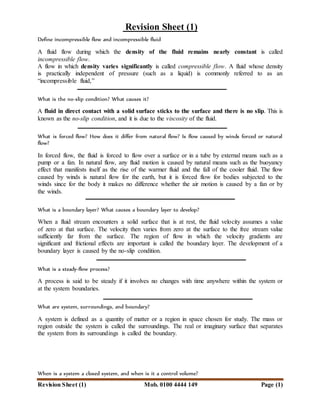1) The document defines incompressible flow and fluid as flow and a fluid where density remains nearly constant. It also defines compressible flow as flow where density varies significantly.
2) It explains that the no-slip condition is when a fluid in contact with a solid surface sticks to the surface due to viscosity, resulting in no slip. This causes boundary layers to form near surfaces.
3) Forced flow is caused by external means like pumps, while natural flow is caused by natural means like buoyancy. Flow from winds is natural for Earth but forced for bodies in the wind.






